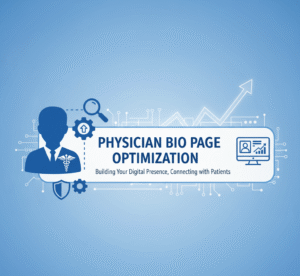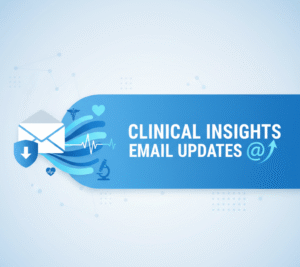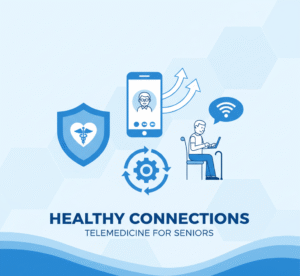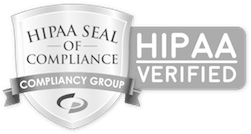“Learn the essential Medical Email Marketing Strategies to build trust, engage patients, and grow your practice while staying compliant with HIPAA and other privacy regulations.”
In the demanding world of modern medicine, your time is your most precious asset. Between patient consultations, administrative duties, and staying current with medical advancements, the idea of “marketing” can feel like a foreign, and perhaps even uncomfortable, concept. Yet, communication is at the very heart of what you do. You educate, inform, and guide your patients toward better health outcomes. What if you could extend that trusted guidance beyond the walls of your examination room?
This is where medical email marketing strategies come into play. It’s not about flashy sales or aggressive promotions. Instead, it’s a powerful tool for continuing the conversation, delivering value, and building a stronger, more engaged patient community. Email marketing reinforces your position as a trusted authority and connects your patients to your practice between visits.
However, the path of healthcare marketing is paved with unique and significant challenges. Unlike any other industry, healthcare operates under a sacred pact of privacy and trust, legally mandated by regulations like the Health Insurance Portability and Accountability Act (HIPAA). A single misstep can have serious legal and reputational consequences.
This guide is designed to be your practical and ethical roadmap. We will navigate the complexities of patient privacy in email marketing, explore healthcare email campaign best practices, and show you how to engage your patients effectively and responsibly. Forget the jargon and high-level theories. Let’s discuss real-world strategies that strengthen your practice and respect your patients.
Why Even Consider Email? The Tangible Benefits for Your Medical Practice
Before we discuss compliance and strategy, it’s essential to understand why this channel is worth your attention. In an age of fleeting social media trends, email remains a direct, personal, and professional line of communication. Its value for a medical practice is multifaceted.
First and foremost, it’s an unparalleled tool for patient education. You spend your days answering questions and demystifying complex health topics. An email newsletter allows you to do this at scale. You can share seasonal health advice (think flu season preparedness or sun safety tips), explain new treatment options available at your practice, or debunk common medical myths circulating online. By consistently providing reliable, easy-to-understand information, you empower your patients to take a more active role in their health and solidify your role as their primary source for credible medical guidance.
Secondly, email marketing is a cornerstone of patient engagement and retention. The patient journey doesn’t end when they walk out your door. Thoughtful email communication keeps them connected. This can be as simple as a follow-up email after a new patient visit or a periodic check-in for patients managing chronic conditions. This consistent contact builds a sense of community and care, making patients feel valued beyond their appointment slot. Consequently, engaged patients are more likely to adhere to treatment plans, schedule preventative care appointments, and remain loyal to your practice for years.
Third, it drives ethical practice growth. Email is an ideal medium to keep your patient base informed about important practice updates. Are you welcoming a new specialist to your team? Extending your office hours? Introducing a new piece of state-of-the-art diagnostic equipment? An email announcement is a professional and effective way to share this news. This keeps your current patients informed and can encourage them to seek new services or refer friends and family who might benefit from them.
Finally, it helps you manage your practice’s reputation. In today’s digital world, online reviews are incredibly influential. A well-timed, tastefully worded email can encourage satisfied patients to share their positive experiences on platforms like Google, Healthgrades, or Vitals. This proactive approach to reputation management helps build social proof and attract new patients searching for a trusted healthcare provider.
The Unbreakable Foundation: Consent, Privacy, and HIPAA Compliance
This is the most critical chapter of our guide. In healthcare, trust is your currency, and privacy is the law. Before you send a single email, you must have a rock-solid understanding of your obligations. Ignoring these rules isn’t just bad practice; it’s illegal and can result in severe penalties, including hefty fines and damage to your professional standing.
Deconstructing HIPAA and Email Marketing
HIPAA, known as Protected Health Information (PHI), was enacted to protect sensitive patient information. PHI includes any information that can be used to identify a patient and relates to their past, present, or future health condition, treatment, or payment for healthcare. This includes obvious identifiers like names, social security numbers, and medical record numbers, but less obvious ones like email addresses, phone numbers, and even photos when linked to health information.
Here’s the key distinction you must understand:
- Transactional & Treatment-Related Emails: These are communications directly related to a patient’s care. Examples include appointment reminders, test result notifications, pre-operative instructions, and billing statements. These emails often contain PHI and must be sent through a secure, HIPAA-compliant email service that encrypts the data.
- Marketing Emails: These are communications that promote a product or service. Examples include monthly newsletters, announcements about a new cosmetic procedure, or information about a wellness seminar. According to the HIPAA Privacy Rule, you must obtain a patient’s explicit, written authorization before sending them marketing communications.
The waters can get muddy. For example, is a newsletter with general health tips “marketing”? Generally, yes. The Department of Health and Human Services (HHS) broadly defines marketing. If the communication encourages recipients to purchase or use a product or service, it’s marketing. Therefore, it’s always safest to assume that any mass email communication that isn’t directly tied to an individual’s specific treatment plan requires prior authorization.
The Golden Rule: Getting Explicit and Verifiable Consent
“Implied consent” is not a valid concept in ethical marketing for doctors. You cannot add every patient’s email address to your newsletter list because they provided it on their intake form for billing purposes. You need explicit permission, often called an “opt-in.”
Here are practical, compliant ways to obtain consent:
- On Your Patient Intake Forms: Add a separate, clearly marked section on your digital or paper intake forms. It should be distinct from the HIPAA privacy policy acknowledgment. Use precise language like: “Yes, I would like to receive occasional health tips, practice news, and educational information via email from [Your Practice Name]. I understand I can unsubscribe at any time.” The checkbox for this must be unchecked by default. The patient must take an active step to opt in.
- On Your Website: Place a simple, clear sign-up form on your website. Prominently feature it on your homepage, blog, or in the footer. Again, be transparent about what users are signing up for. “Join our monthly newsletter for trusted health insights from our doctors.”
- In-Person at the Practice: Your front desk staff can play a helpful role. When patients check out, they can ask, “Would you be interested in receiving our monthly health newsletter with tips from Dr. [Your Name]?” If the patient says yes, their consent should be documented in their file.
Crucially, you must also provide a clear and straightforward way for patients to unsubscribe in every marketing email. This is not just a best practice; it’s a legal requirement under the CAN-SPAM Act. A one-click “unsubscribe” link at the bottom of your email is standard and essential.
Navigating the CAN-SPAM Act
While HIPAA governs patient privacy, the CAN-SPAM Act governs all commercial email. Your marketing communications must comply with both. The key requirements of CAN-SPAM include:
- Don’t use false or misleading header information.
- Don’t use deceptive subject lines.
- Identify the message as an advertisement.
- Tell recipients where you’re located (a valid physical postal address).
- Tell recipients how to opt out of receiving future emails from you.
- Honor opt-out requests promptly.
Adhering to these rules is straightforward and demonstrates professionalism and respect for your audience’s inbox.
Crafting Your Content: What Actually to Send to Your Patients
Once you have the compliance framework in place, the creative part begins. The goal of every email is to provide value. Your patients’ inboxes are crowded, so your content must be relevant, helpful, and trustworthy to earn their attention. Avoid overly clinical language and focus on clear, empathetic communication.
The Cornerstone: Your Medical Newsletter Strategy
A monthly or quarterly newsletter is the perfect foundation for email marketing efforts. It’s a consistent touchpoint that allows you to cover various topics and reinforce your expertise. Here are some powerful content ideas for your medical newsletter:
- Seasonal Health Focus: Tailor your content to the time of year. In the fall, write about flu prevention. In the spring, offer tips for managing seasonal allergies. In the summer, discuss sun safety and hydration. This makes your content timely and immediately valuable.
- Myth vs. Fact: Take on common health misconceptions from patients daily. “Myth vs. Fact: Understanding Cholesterol” or “Debunking 3 Common Cold and Flu Myths.” This positions you as a clarifying voice in a sea of online misinformation.
- Service Spotlight (The Educational Way): Instead of just announcing a new service, explain the problem it solves. For a dermatology practice introducing a new laser treatment, an article could be titled, “Understanding Hyperpigmentation and Modern Treatment Approaches.” You educate first, and then mention your new service as a potential solution.
- Staff Spotlight: Humanize your practice by featuring a short interview with a nurse, a medical assistant, or a front desk manager. Ask them about their role, why they love working in healthcare, and a fun fact about themselves. This builds a personal connection and makes your practice feel more approachable.
- Healthy Recipes or Lifestyle Tips: Depending on your specialty, you could include a heart-healthy recipe (cardiologist), tips for improving sleep hygiene (general practitioner), or simple stretches to relieve back pain (orthopedist). This provides actionable value that patients can apply to their daily lives.
Moving Beyond the Newsletter: Segmentation and Personalization
As your email list grows, you can make your communications even more effective through segmentation. This means dividing your audience into smaller groups based on shared characteristics to send them more relevant content.
IMPORTANT CAVEAT: You must be extremely careful with PHI here. You should never segment your general marketing lists based on a patient’s diagnosis, medical history, or treatment plan without their explicit, separate consent for that specific purpose.
Here are safe and ethical ways to segment your list:
- By Stated Interest: When patients sign up, you can offer them checkboxes for different topics. For example, an OB/GYN practice could offer newsletters for “Expecting Parents,” “New Mothers,” or “Menopause Health.” Patients self-select their interests.
- New Patients vs. Established Patients: Send a special welcome series to new patients over their first few months. This could include an email introducing all the doctors in the practice, another explaining your online patient portal, and a third highlighting your blog or other educational resources.
- By Service Engagement (Non-Clinical): If you host a free, public webinar on “Managing Sports Injuries,” you can send a follow-up email summarizing the key points to those who attended. You are segmenting based on their voluntary participation in an educational event, not their private medical data.
Personalization can be as simple as using the recipient’s first name in the greeting. “Dear Sarah” feels much warmer than “Dear Patient.” Most email marketing platforms automate this easily. This slight touch goes a long way toward making your communication feel more personal and less like a mass broadcast.
Other High-Value Email Campaigns
Beyond newsletters, consider these targeted campaigns:
- Practice Announcements: Keep your patients in the loop about changes like new office hours, holiday closures, new insurance plans accepted, or adopting new technology that improves the patient experience.
- Review and Feedback Requests: A few days after an appointment, you can send a non-intrusive email asking about their experience. “We value your feedback and are always looking to improve. We’d be grateful if you could take a moment to share your experience on [Link to Google/Healthgrades].” This should be a soft ask, not a demand.
- Educational Drips for Specific Procedures: For elective procedures, you can create a series of automated emails (a “drip campaign”) that educates potential patients. For instance, a patient interested in LASIK could receive emails explaining the procedure, what to expect during recovery, and answers to frequently asked questions. Again, they would need to opt in to receive this information specifically.
Best Practices for Execution: Ensuring Your Emails Get Opened and Read
Crafting great content is only half the battle. You must also ensure your emails are delivered, opened, and read. Here are some essential technical and stylistic best practices.
- Craft a Trustworthy Subject Line: Your subject line is your recipient’s first impression. It needs to be clear, concise, and credible. Avoid sensationalism, all caps, or excessive exclamation points, which can trigger spam filters and look unprofessional.
- Good: “Your October Health Update from [Your Practice Name]”
- Good: “5 Tips for a Healthy Heart from Dr. Smith”
- Bad: “💥💥AMAZING OFFER INSIDE – YOU WON’T BELIEVE THIS!💥💥”
- Write Like a Human, Not a Medical Journal: Use a conversational and empathetic tone. Break down complex topics into simple, digestible language. Use short sentences and paragraphs. Your goal is to connect and educate, not to publish a peer-reviewed paper.
- Optimize for Mobile Devices: Most emails are now opened on smartphones. Your email template must be “responsive,” meaning it automatically adjusts to fit the screen on which it’s being viewed. If your emails are difficult to read on a phone, they will be deleted.
- Maintain a Consistent Sending Schedule: Whether you send your newsletter weekly, bi-weekly, or monthly, stick to a predictable schedule. This trains your audience to expect and look forward to your communications. Consistency builds reliability.
- Proofread. Then Proofread Again: Typos and grammatical errors can instantly undermine your authority and professionalism. Read every email aloud before sending it; have a second person review it.
- Measure Your Performance: Pay attention to your email platform’s basic metrics. The Open Rate tells you how many people opened your email, indicating the effectiveness of your subject line. The Click-Through Rate (CTR) tells you how many people clicked a link in your email, indicating the engagement of your content. Use this data to understand what resonates with your audience and refine your strategy over time.
Choosing Your Tools: The Critical Role of a HIPAA-Compliant Platform
This crucial point cannot be overstated: standard email marketing platforms like Mailchimp or ConvertKit (in their basic configurations) cannot be used for PHI communications. To be HIPAA compliant, your email service provider (or any other vendor that handles PHI) must be willing to sign a Business Associate Agreement (BAA).
A BAA is a legally binding contract that requires the vendor to uphold the same standards of PHI protection that you do. Without a signed BAA, you violate HIPAA if you use that vendor to transmit PHI.
When choosing an email marketing platform, you have two primary paths:
- Use a Dedicated HIPAA-Compliant Platform: Services like Paubox, Virtru, or Constant Contact’s healthcare-specific plans are designed for the healthcare industry. They will sign a BAA and have built-in security features like encryption to protect patient data. This is the safest and most recommended approach for any treatment-related communication.
- Strictly Segregate Your Marketing: You could use a standard platform if you only send general marketing newsletters with no PHI and have collected consent separately. However, this approach carries more risk. It’s easy for lines to blur, and the potential for a compliance mistake is higher. A BAA-backed platform is superior for peace of mind and ironclad compliance.
Conclusion: A Strategy Built on Trust
Medical email marketing is a journey of building relationships, not just a series of campaigns. It requires a thoughtful blend of valuable content, technical precision, and an unwavering commitment to ethics and patient privacy. By putting consent first, focusing on education, and communicating with empathy, you can transform your email list from a simple directory into a thriving, engaged patient community. This approach strengthens your practice and honors your patients’ profound trust in you.
Navigating this complex digital landscape—from HIPAA compliance in email to optimizing your website for search engines—can feel overwhelming. You are a medical expert, and your focus should be on your patients. Partnering with a digital marketing expert who deeply understands the unique challenges and regulations of the healthcare industry is often the most effective path forward.
This is where InvigoMedia comes in. We are not a generalist marketing agency; we are specialists in the medical and healthcare sector. We understand that marketing is built on a foundation of authority, ethics, and trust for doctors. Our team provides compliance-focused digital marketing solutions tailored specifically for medical professionals.
From developing HIPAA-compliant email marketing strategies to executing precision SEO and PPC campaigns that attract the right patients, we handle the complexities of digital marketing so you can focus on what you do best. Our services include expert website design that enhances the patient experience, content creation that establishes your authority, and comprehensive digital strategies that drive practice growth responsibly. With InvigoMedia, you gain a partner with authoritative expertise in the healthcare space, ensuring your marketing is effective, trusted, and respectful of the unique demands of your profession.
Ready to engage your patients and grow your practice the right way? Contact InvigoMedia today to learn how our specialized digital marketing services can help you achieve your goals.
Frequently Asked Questions (FAQs)
Q1: Can I use my personal or office Gmail account to send a patient newsletter?
A: Absolutely not. Standard email services like Gmail or Outlook are not HIPAA compliant for mass communication or for sending any PHI. They lack the necessary security features and will not provide a Business Associate Agreement (BAA). Using them for patient communication puts you at significant risk of a HIPAA violation.
Q2: What is the main difference between a “marketing” email and a “transactional” email in healthcare?
A: A transactional email directly relates to a patient’s care or an administrative process. Examples include appointment reminders, billing notifications, or lab result alerts. A marketing email primarily aims to promote a service or product, even if it’s educational. A monthly newsletter, an announcement about a new cosmetic procedure, or a promotion for a health screening all fall under marketing and require explicit patient consent (opt-in).
Q3: How often should I be emailing my patients?
A: Consistency is more important than frequency. For most practices, a monthly newsletter is a great starting point. It’s frequent enough to stay top-of-mind but not so frequent that it becomes annoying. The key is to provide value with every send. If you don’t have something genuinely helpful to say, it’s better to wait.
Q4: Is buying a list of email addresses a good idea to find new patients?
A: No, never. This is a terrible idea for several reasons. First, it violates the principles of consent-based marketing and is illegal under the CAN-SPAM Act. Second, these lists are often low-quality and will result in high spam complaints, damaging your sender reputation. Third, and most importantly, it’s a breach of trust. Great patient relationships start with permission and respect, not unsolicited emails.
Q5: Should I invest in a special “HIPAA-compliant” email platform? It seems expensive.
A: Yes. If you plan to send any communication that contains or could potentially contain PHI, using a platform that will sign a BAA is a legal requirement, not a choice. While these platforms may have a higher cost than standard providers, the price of a HIPAA violation—which can run into thousands or even millions of dollars, plus irreparable damage to your reputation—is exponentially higher. It’s a necessary investment in the security and integrity of your practice.













